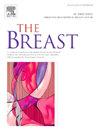辅助卡培他滨在新辅助治疗后残余病变的三阴性乳腺癌中的疗效:一项真实世界的研究
IF 5.7
2区 医学
Q1 OBSTETRICS & GYNECOLOGY
引用次数: 0
摘要
目的通过分析卡培他滨在不同HER2状态和TNM分期的疗效,确定卡培他滨在未达到病理完全缓解(pCR)的三阴性乳腺癌(TNBC)患者中的受益对象。方法绘制Kaplan-Meier生存曲线,评估卡培他滨治疗对无病生存期(DFS)和总生存期(OS)的影响。采用Cox比例风险模型分析影响DFS和OS的因素。结果本研究共纳入296例经新辅助治疗(NAT)后非pcr的TNBC患者。卡培他滨组152例(51.4%),非卡培他滨组144例(48.6%)。卡培他滨组3年DFS和OS均优于无卡培他滨组(DFS 80.0%比68.0% p = 0.012, OS 95.9%比86.9% p = 0.011)。此外,在her2 -低(DFS p = 0.004, OS p = 0.009)和III期(DFS p = 0.004, OS p = 0.008)人群中,卡培他滨组的DFS和OS明显优于无卡培他滨组,但在HER2-0或II期人群中则没有。结论卡培他滨辅助治疗可显著改善TNBC术后残留病变患者的预后,且对her2低表达及III期病变患者的预后改善更为显著。对于HER2-0表达或II期疾病患者,应探索其他有效的治疗方法。本文章由计算机程序翻译,如有差异,请以英文原文为准。
Efficacy of adjuvant capecitabine in triple-negative breast cancer with residual disease after neoadjuvant therapy: a real-world study
Purpose
To determine the beneficiaries of capecitabine in patients with triple-negative breast cancer (TNBC) who failed to achieve pathological complete response (pCR) by analyzing the efficacy of the drug in different HER2 statuses and TNM stages.
Methods
The Kaplan–Meier survival curve was plotted to estimate the effect of capecitabine therapy on disease-free survival (DFS) and overall survival (OS). Furthermore, the Cox proportional hazards model was used to analyze the factors that influence DFS and OS.
Results
A total of 296 patients with TNBC who had non-pCR after undergoing neoadjuvant therapy (NAT) were included in this study. There were 152 patients (51.4 %) in the capecitabine group and 144 patients (48.6 %) in the no-capecitabine group. The 3-year DFS and OS rates of the capecitabine group were better than those of the no-capecitabine group (DFS 80.0 % vs. 68.0 % p = 0.012, OS 95.9 % vs. 86.9 % p = 0.011). In addition, the capecitabine group exhibited significantly better DFS and OS than the no-capecitabine group in the HER2-low (DFS p = 0.004, OS p = 0.009) and stage III (DFS p = 0.004, OS p = 0.008) populations but not in the HER2-0 or stage II population.
Conclusion
Adjuvant capecitabine therapy significantly improved the prognosis of patients with TNBC who had residual disease after NAT, and the improvements in the outcomes were significant in patients with HER2-low expression and stage III disease. Other effective treatment methods should be explored for patients with HER2-0 expression or stage II disease.
求助全文
通过发布文献求助,成功后即可免费获取论文全文。
去求助
来源期刊

Breast
医学-妇产科学
CiteScore
8.70
自引率
2.60%
发文量
165
审稿时长
59 days
期刊介绍:
The Breast is an international, multidisciplinary journal for researchers and clinicians, which focuses on translational and clinical research for the advancement of breast cancer prevention, diagnosis and treatment of all stages.
 求助内容:
求助内容: 应助结果提醒方式:
应助结果提醒方式:


